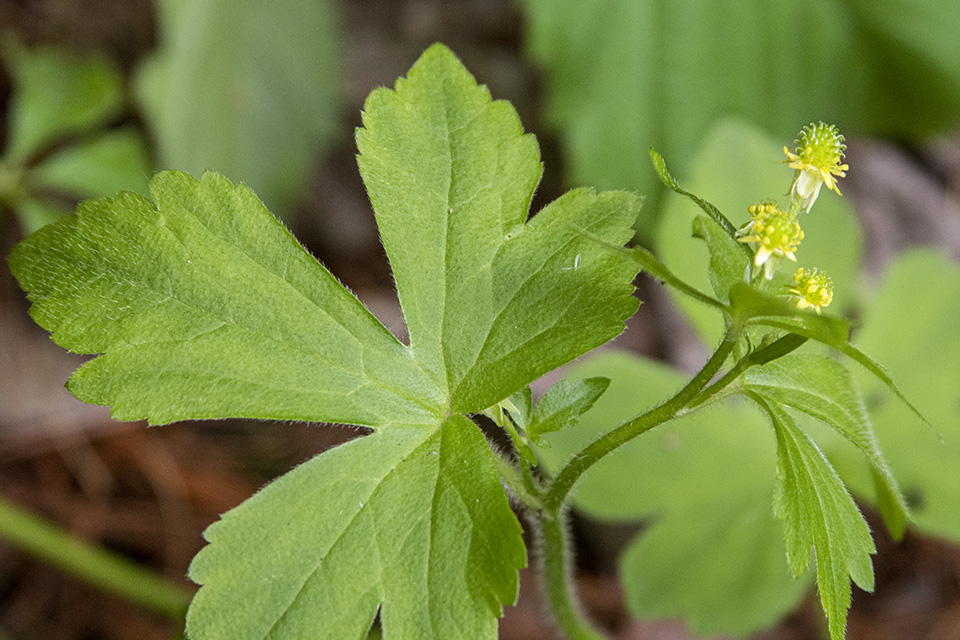
Hooked buttercup (Ranunculus recurvatus var. recurvatus) is a common woodland spring wildflower. It occurs in the eastern half of the United States and southern Canada. It is found in wet to moderately moist or sometimes dry woodlands, in woodland openings and trails, on banks of rivers and streams, and in swamps and fens. It grows in rich organic soil under light to medium shade.
Most members of the genus Ranunculus, including hooked buttercup, are poisonous. They cause blistering in the mouth and in the gastrointestinal tract when eaten. Handling the plants causes contact dermatitis.
Hooked buttercup is an erect plant. The basal leaves are large and are divided into three lobes. A few solitary flowers appear at the end of the stem between May to June. The flowers have small, pale yellow petals and are not showy. The fruits have a slender extension (beak) at the end. The beak is strongly curved, appearing hooked. This is the feature that gives the plant its common name.
Hooked buttercup is easily identified. The large lobed leaves and small pale yellow petals help with the identification. The hooked beak of the achenes confirm it.
http://www.minnesotaseasons.com/Plants/hooked_buttercup.html
